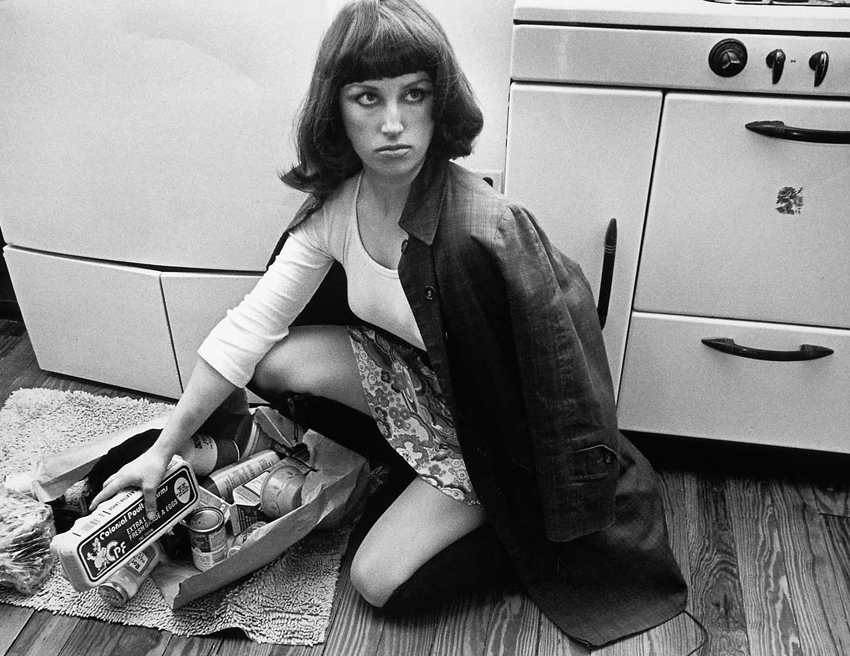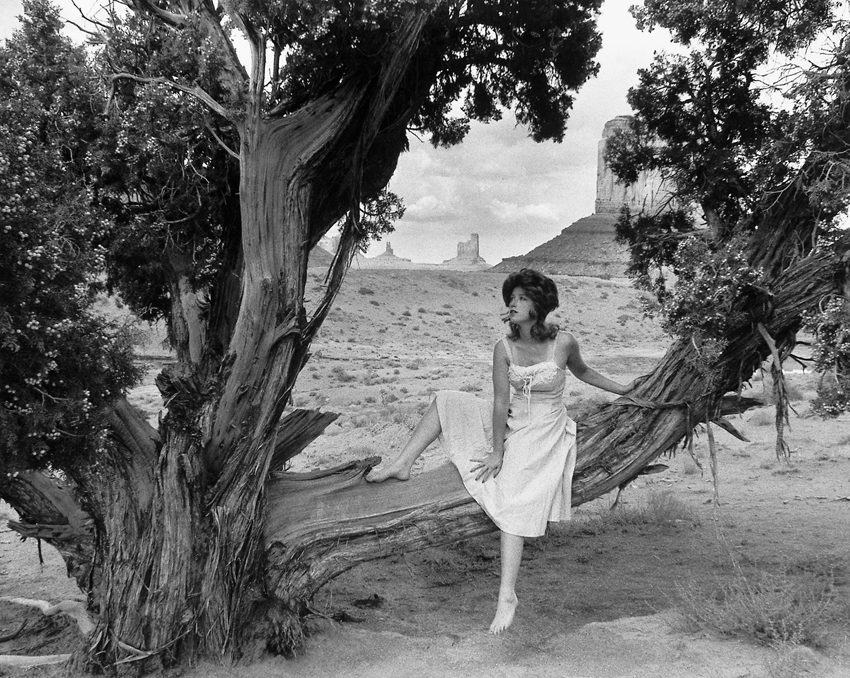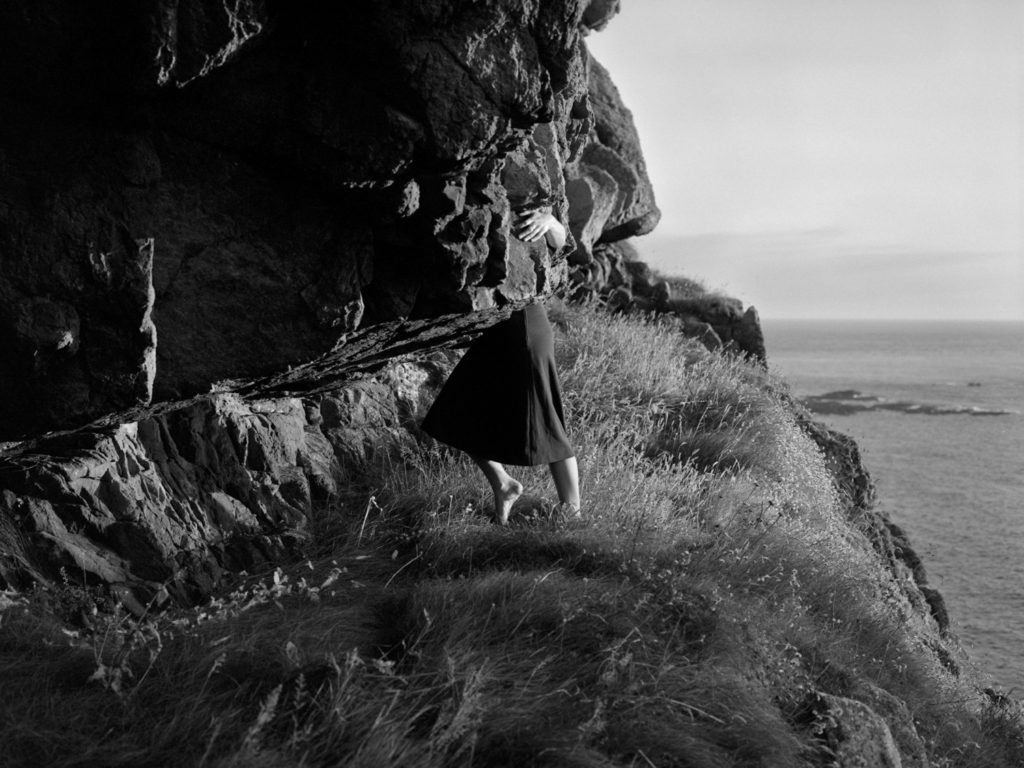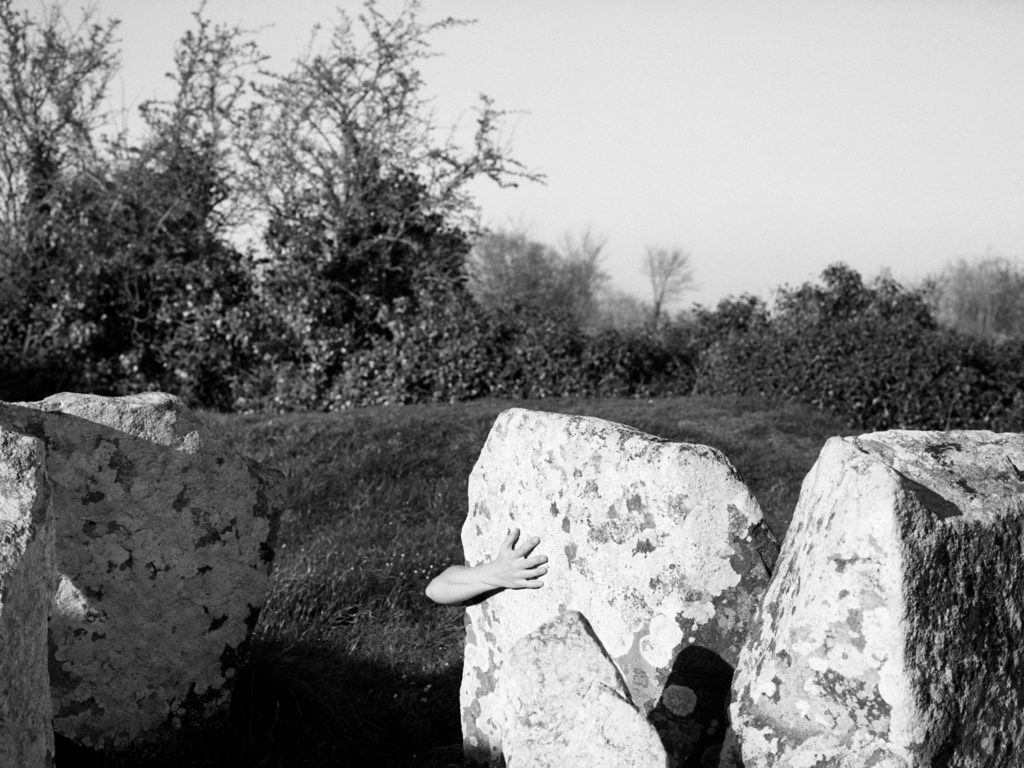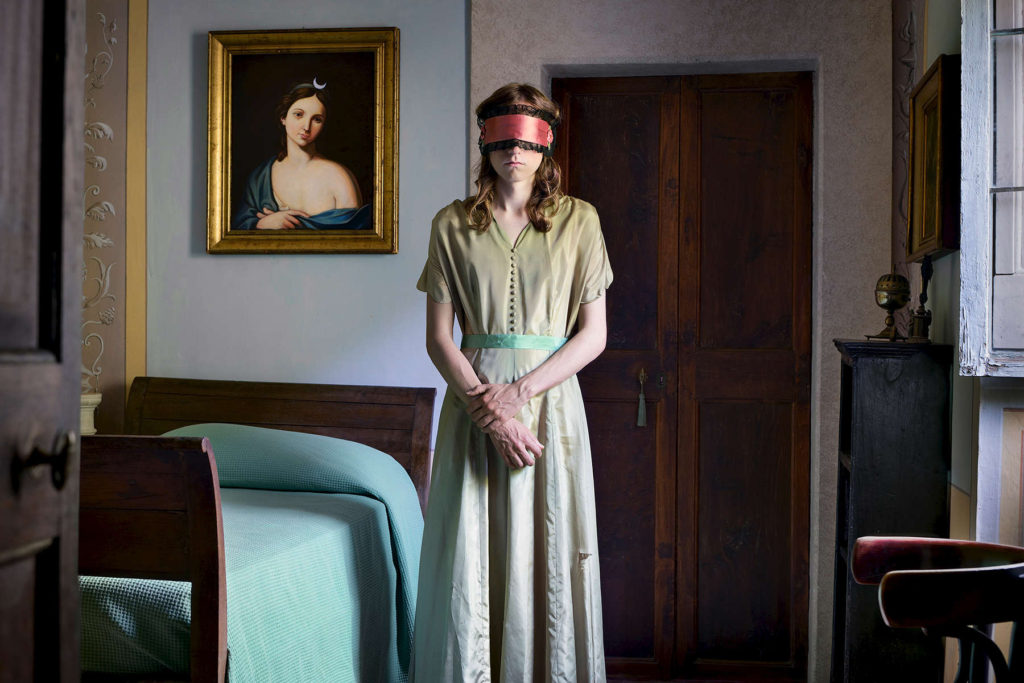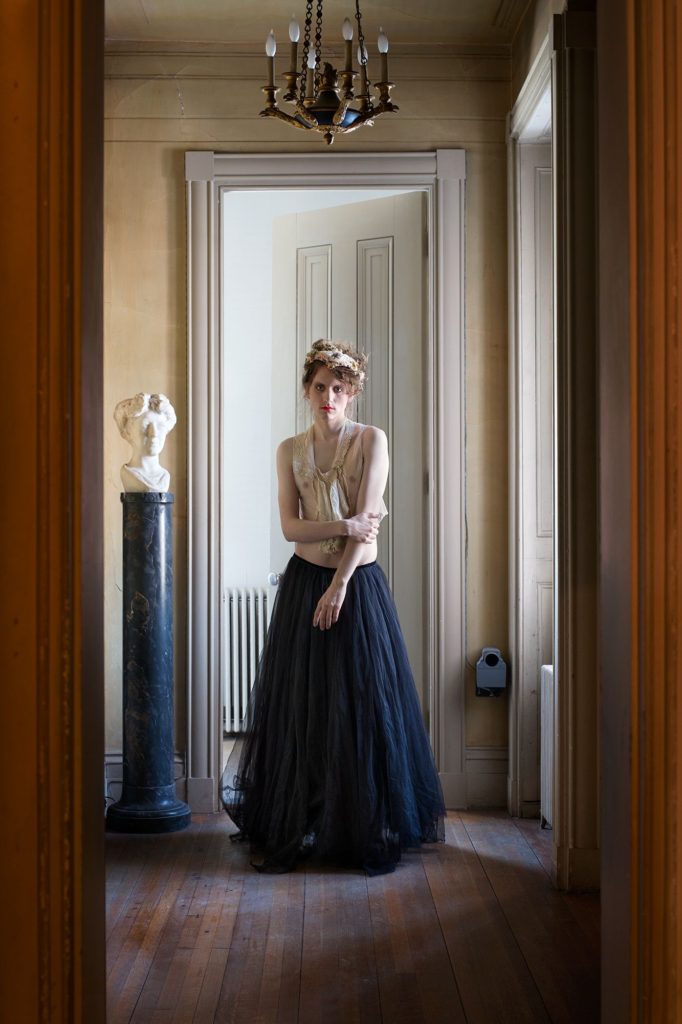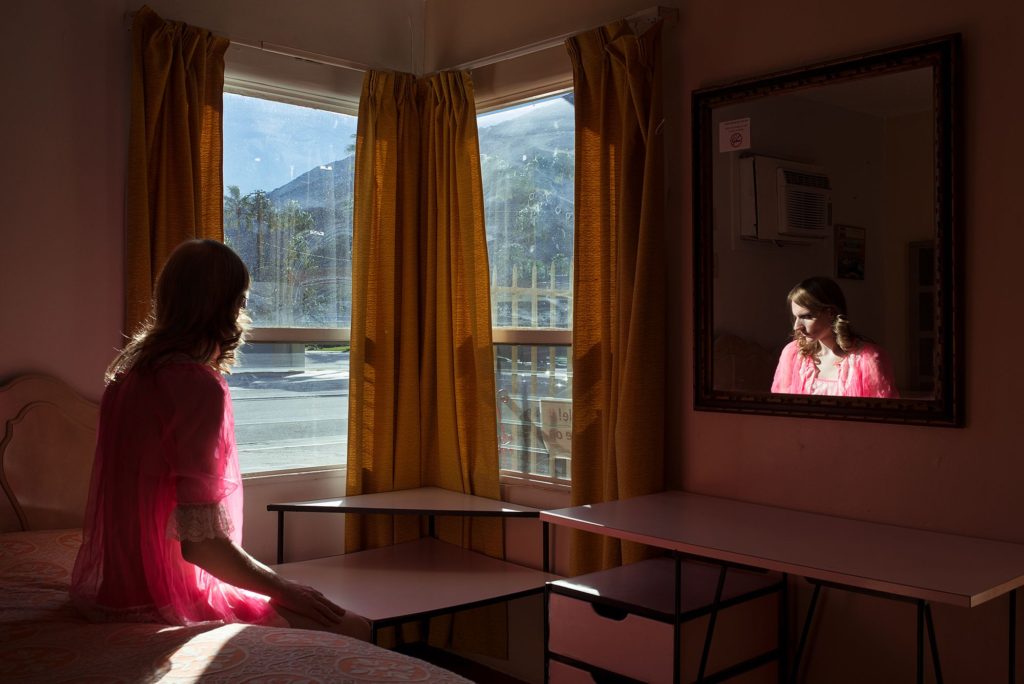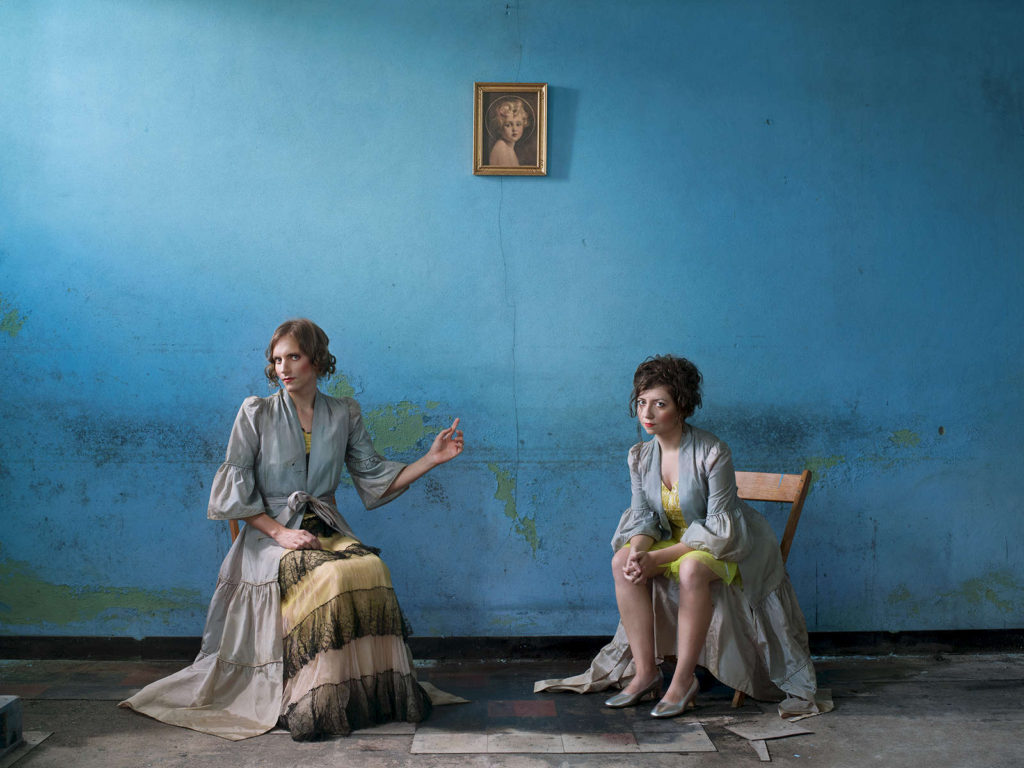Cindy Sherman – Untitled Film Stills
Cindy Sherman (1954-present) is an American filmmaker and photographer who focuses her work on critiquing themes of gender and identity. In her early years Sherman created fine art, however abandoned painting for photography while attending the State University of New York at Buffalo, and in 1976, moved to New York to pursue a career as a photographer. Her work has been the subject of many museum exhibitions, including those at The Museum of Modern Art in 2019, and at the National Portrait Gallery, in London during 2019. Sherman captures self portraits, her most notable body of work are her ‘Untitled Film Stills’ which feature the artist herself as a model in various costumes and poses, and are her portrayals of female stereotypes found in film, television, and advertising – all captured in black and white. In the film stills, rather than quoting from recognizable movies, Sherman suggests genres, resulting in characters that emerge as personality types instead of specific actresses. The first six images of the series depict the same blonde actress at various stages of her career. Later, the character appears as a seductress, waiting at home for her lover – then afterwards Sherman might be seen as the trope of the diligent, stay-at-home wife who remains attractive and available to her husband.
Sherman’s Film Stills have been described as “a hybrid of photography and performance art that reveals femininity to be an effect of representation.”. Sherman states “I like making images that from a distance seem kind of seductive, colourful, luscious and engaging, and then you realize what you’re looking at is something totally opposite,” she reflected. “It seems boring to me to pursue the typical idea of beauty, because that is the easiest and the most obvious way to see the world. It’s more challenging to look at the other side.” Sherman on being a female photographer; “There’s a theory that there were so many women photographers at the time because we felt nobody else was doing it. We couldn’t or didn’t really want to go into the male-dominated painting world, so since there weren’t any artists who were using photographs, we thought, ‘well, yeah, let’s just play with that.’ “
I love the way Sherman can create such a strong narrative in her images, each one tells a story and forms some sort of message towards the representation of women. Her style of photography is so interesting to me, her images are intimate and close, allowing the observer to feel connected to her scene. The black and white filter also evokes a sense of melancholy in her work, and her exaggerated ‘feminine poses’ seem to mock the portrayal of women in a patriarchal society. Her work holds strong links to feminist film theorist Laura Mulvey, and her ideas on ‘The Male Gaze’ stating; visual media that respond to masculine voyeurism tends to sexualise women for a male viewer. This sexism within the film industry is what Sherman has captured in her Untitled Film Stills, shedding light on the negativity of some feminine stereotypes.
In our project, we really want to take inspiration from Sherman’s series of images by replicating her stereotypical style and narratives. The ‘house-wife’ character is one we wish to represent in our NFT film, using ideas surrounding what stereotypically ‘should be a woman’s place’ and filming in the setting of a kitchen. We plan on our images holding hints towards a woman’s innocence eg, wearing white flowing dresses etc to show her purity and goodness. As we plan on using these shots in the early stages of our project, the timeline will begin in the first wave of feminism and will hold reference to the suffragette/suffragist movement of the late 1800’s – mid 1900’s.
Clare Rae – Never Standing On Two Feet
Clare Rae is an artist and photographer from Melbourne Australia, in her photographic practice Clare explores ideas of performance and gesture to interrogate and subvert dominant modes of representation. Her work is informed by the feminist theory, and presents an alternate and often awkward experience of subjectivity and the female body, usually the artists’ own. In 2017, Rae undertook an artist’s residency with Archisle: the Jersey Contemporary Photography Programme to research the archive of Claude Cahun works held by Jersey Heritage. It was during this time that she created the photographic series ‘Never Standing on Two Feet’, paying a homage to avant-garde artist Claude Cahun (1894-1954), drawing upon Cahun’s photographic archive to explore the female body, self-hood, ritual and the male gaze in cultural and geographical landscapes.
A quote from Clare Rae, on ‘Never Standing on Two Feet’ – “My series, Never standing on two feet, considers Cahun’s engagement with the physical and cultural landscapes of Jersey, an aspect of her work that has received little analysis to date. The photographs Cahun produced in Jersey are intimate. They explore an idea of self within the immediate environment and were produced in collaboration with her lover, Marcel Moore. Many threads of inquiry emerged for me while viewing the archive: Cahun’s performative photographic gestures; the nature of photographic performance for a lover; and the repercussions of imaging a woman’s body aging over time, to name a few.”
I really enjoy the way Rae’s self-portraits explore the coastal geography and Neolithic monuments of Jersey, relating body to place and creating a sense of mystery. Similar to how Cahun used self-portraiture to subvert the dominance of the male gaze, Rae has created a series of images that tease at the idea of women’s bodies being objectified, and women fighting back against this. As her portraits show parts of her body hidden away by the landscape, it conveys the ideas of 3rd Wave Feminism and the fighting women did for equal rights (including pay, reproductive rights, the ERA etc) during the early 90’s and 2000’s. The monochrome filter on these photographs creates an interesting atmosphere of mystery and sadness, representing the oppression of women still holding significance in society as time moves on.
For our community NFT project, we wish to take inspiration from Clare Rae’s ideas on women standing up for what they believe in and taking action towards their oppression. We have the idea to represent Women’s Rights Activism throughout the late 20th Century, using Rae’s technique of hiding parts of a woman’s body to make a statement on its constant sexualisation. We wish to do this by using a woman’s rights poster in shot, which will be lifted to hide our models torso as she walks past the camera – demonstrating activism, and hinting towards the exploitation of women.
Lissa Rivera – Beautiful Boy
Lissa Rivera is a photographer based in New York, she received her MFA from the School of Visual Arts, where she became fascinated with the social history of photography and the evolution of identity, sexuality and gender in relationship to material culture. Rivera grew up in a small town, without much excitement or things to do, therefore she had to create this excitement and wonder herself in order to capture images of meaning and significance. Most of Rivera’s images are staged and hold an almost regal atmosphere to them – her style of photography is expressive and vibrant, something our group wants to portray during our NFT film. Our group discovered Rivera from her project ‘Beautiful Boy’, where Rivera and her domestic partner use staged portraiture as an expressive way to explore male/female identity and reclaim a personal definition of beauty.
A statement Lissa Rivera made about her project in ‘Metal Magazine’; “Beautiful boy was born out of a series of conversations between my friend BJ and I about femininity, fantasy and gender. At the time we were not in a romantic relationship and had no idea of the future. On a subway ride home from a queer film screening, BJ (who is now my sweetheart) confessed that they preferred to be feminine and often wore dresses. In college he was able to be open about his gender expression, but since moving to the city and taking on a new job, it had become more complicated. We spoke about the struggles that we both felt with femininity, how femininity is still considered weaker and less valuable in our culture. I offered to take BJ’s portrait, so that he could see himself.” Additionally, Rivera states “It is important to show his femininity as strength. I want to feel empowered as well, and to have an intimate muse. Together we investigate feminine fantasies presented throughout the history of photography and cinema. The project is a way to “step inside” images that we have found alluring and examine what it is like to live each scenario out. We explore both our captivation and our ambivalence towards these depictions of femininity. By presenting my partner within the lineage of great beauties and populating the media with our images, we are reclaiming in our voice what is attractive and beautiful.”
I love the way that Rivera can capture such innocence and bravery in these images – they inspire and break gender norms that societies have created over the years. The compositions of her photographs hold symmetry and leading lines which draw the observers view towards the main subject. I really enjoy Rivera’s use of monochrome colours in her images, the blocky pinks, blues and browns hint at ideas of simplicity in a world of chaos – where one can truly be themselves without judgement or oppression. This theme is one we wish to take from Rivera’s work, the idea of being free as yourself, feeling comfortable in your femininity and allowing yourself to feel confident without the need for it to be sexualised.
For our NFT project, we are aiming to take inspiration from Rivera’s regal setting and style of photography. The curtains, chandeliers and extravagant wallpapers are all aspects we wish to replicate during our photoshoot due to their link with confidence, power and authority – all of which a woman must fight hard to have. We have the idea to use Rivera-style videos/images at the end of our community project, representing the timeline of women’s rights with this ending demonstrating empowerment and luxury.


